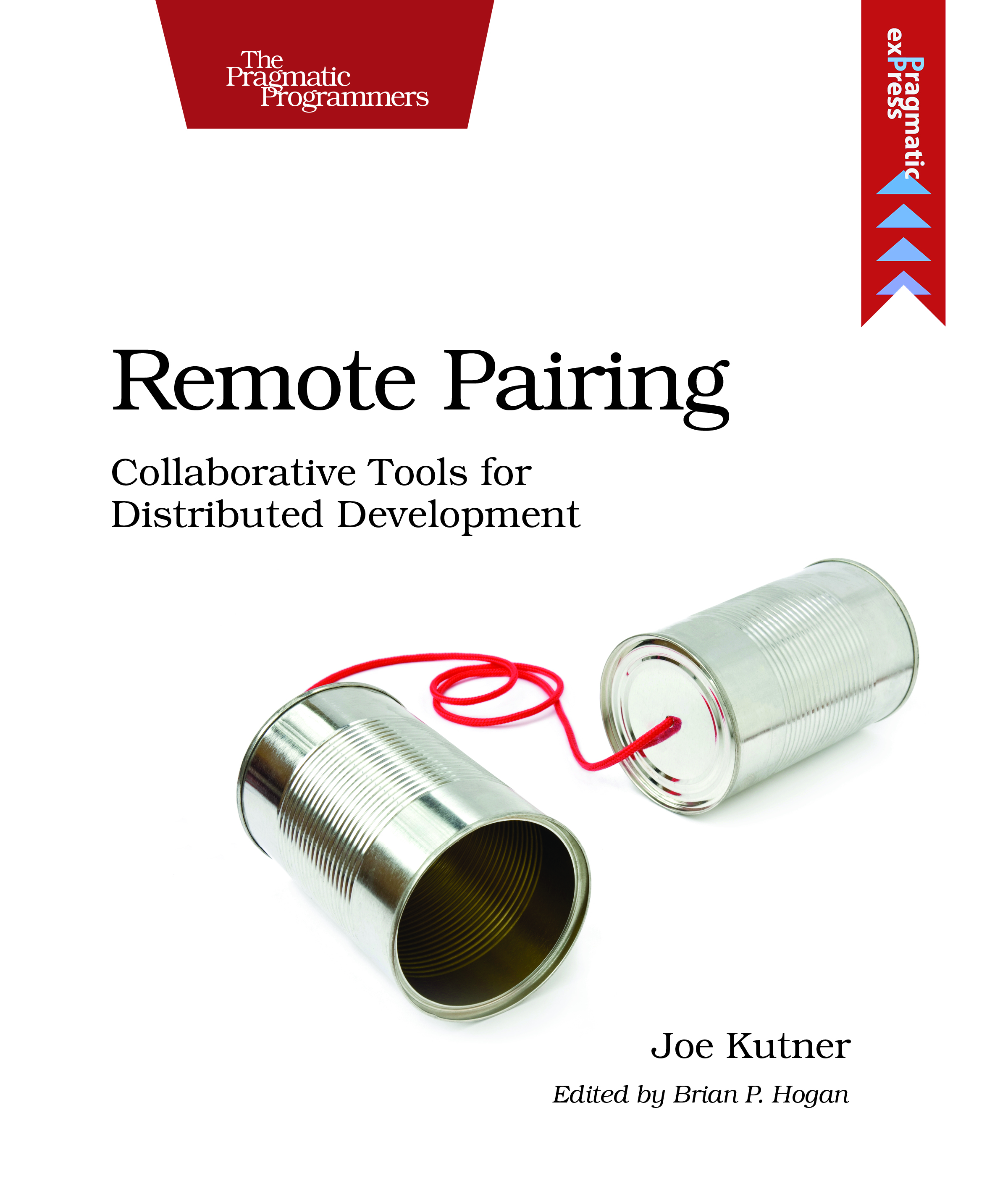Remote Pairing
Collaborative Tools for Distributed Development
by: Joe Kutner
| Published | 2013-12-02 |
|---|---|
| Internal code | jkrp |
| Print status | In Print |
| Pages | 108 |
| User level | |
| Keywords | pair programming, xp, agile, agile methods, agile methodology, XP scrum, extreme programming |
| Related titles |
|
| ISBN | 9781937785741 |
| Other ISBN |
Channel epub: 9781680504569 Channel PDF: 9781680504576 Kindle: 9781937785901 Safari: 9781941222348 Kindle: 9781937785901 |
| BISACs | COM051000 COMPUTERS / Programming / GeneralCOM066000 COMPUTERS / Enterprise Applications / Collaboration SoftwareCOM066000 COMPUTERS / Enterprise Applications / Collaboration Software |
Highlight
You’ve heard about pair programming’s benefits: fewer bugs, improved skills, and faster delivery. But what happens when you want to pair with someone in another city, country, or even hemisphere? With the right tools, you won’t have to relocate to refactor. In this book, you’ll learn techniques used by the most productive remote programmers in the industry to pair with anyone on the globe on any kind of project. You’ll use collaborative editors, screen sharing, secure networking, and virtualization to create a remote pairing environment that feels as if your partner is sitting right next to you.
Description
Two heads are better than one, but only if they’re working on the same problem. When pairing remotely, this requires a specialized environment that you’ll learn how to create. We’ll use the same open-source tools as the pros to improve collaboration and increase productivity. You’ll learn techniques, patterns, and best practices you can apply to projects of all kinds. These tools are so effective that many co-located programmers use them despite sitting side-by-side—you don’t have to work outside of an office for this book to improve your programming techniques.
We’ll start by creating a secure collaborative editing environment capable of handling the low-bandwidth networks at some coffee shops. Then we’ll share your screen using free open source tools and protocols. We’ll deploy all of this to a server in the cloud so you can access your development environment from anywhere. Then we’ll use one of the most advanced integrated development environments to collaborate, sketch on a virtual whiteboard, and resolve conflicts.
Finally, we’ll talk with programmers at Pivotal Labs, Big Nerd Ranch, and other top-notch distributed development firms to learn how they handle the challenges of remote pairing on a daily basis. With their help and advice, you can be productive from any location on the planet.
Contents and Extracts
- Acknowledgments
- Preface
- Who Should Read This Book?
- Why Should You Read This Book?
- What’s in This Book?
- What Do You Need to Use This Book?
- Having a Partner Is Optional
- Introduction to Pair Programming excerpt
- Laying the Ground Rules
- Examining the Evidence
- Pairing Up
- Getting Started with Some Basic Tools
- What’s Next?
- Collaborating with Text Only
- Installing tmux
- Using tmux as a Solo Programmer
- Sharing a tmux Session excerpt
- Using tmux for Pairing
- What’s Next?
- Using the Cloud to Connect
- Creating a Reverse Proxy Server
- Creating the Secure Tunnel
- What’s Next?
- Collaborating with Shared Screens
- Choosing a Screen-Sharing Tool
- Using VNC for Complete Screen Sharing
- Using NX for Partial Screen Sharing
- What’s Next?
- Building a Pairing Server
- Initializing the Pairing Server with Vagrant
- Provisioning with Puppet
- Using the Server
- Running the Server in the Cloud
- What’s Next?
- Collaborating with an IDE
- Installing Saros and Eclipse
- Sharing an Eclipse Project with Saros
- Whiteboarding with Saros
- What’s Next?
- Remote Pairing in the Wild
- Pairing at Test Double
- Pairing at Pivotal Labs excerpt
- Pairing at Big Nerd Ranch
- Patterns of Pairing
- Wrapping Up
